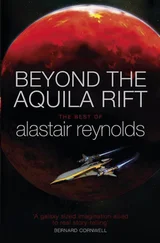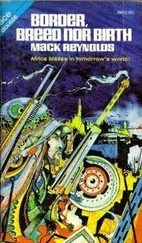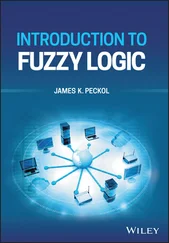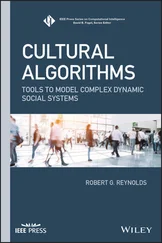1 ...7 8 9 11 12 13 ...20 Publishers are often looking for knowledgeable and creative materials writers to develop textbooks. Some of the most common publishers in TESOL are Cengage Learning, Pearson ELT, Wiley, Cambridge University Press, Oxford University Press, TESOL International Association, Macmillan, Heinemann, Ballard-Tighe and University of Michigan Press. There are smaller publishing houses that supply important materials for professionals, such as Multilingual Matters and Domino Publishing. These publishers provide textbooks and readers for pre-kindergarten through university in various areas of study. They also offer resource materials for the classroom, such as manipulatives and games. Some organizations create software and applications as well for language study (e.g., Dyned, Rosetta Stone) or for teachers’ use (e.g., www.lessonwriter.com).
Educators who are interested in the development of tests, exams, and assessments can work for organizations who develop different types of exams. Some examples of assessment organizations are IELTS and WIDA. The IELTS is a standardized test of English language proficiency focusing on the language needed for communication in academic or work settings. WIDA is an organization that created a series of assessments to evaluate ELLs’ language proficiency in academics to determine if they need language study and support in pre-K–12 schools. Educators working in this area write test items, such as reading passages and comprehension questions or writing prompts. They may also assess how well a test question distinguishes the highest and lowest levels of performance.
At times, publishers and testing organizations need knowledgeable educators to consult with them in the development of a textbook or exam. School districts need the guidance of experts as well. Some educators become vital resources for publishers, testing organizations, and schools working as independent consultants. Educational consultants may evaluate textbooks and provide a written review of the strengths and weaknesses of a textbook before publication. School districts invite consultants to observe classes, provide workshops or long-term professional development on a new educational development or methodology, or engage in data analysis for program evaluation or redesign.
Contributions of TESOL and Applied Linguistics in Education
The field of TESOL/Applied Linguistics has influenced education worldwide. Research into the teaching and learning of additional languages has permeated teacher preparation programs all over the world. Research into the authentic use of language in conversations has shown how conversations are structured and how people take turns, which can be used to inform the teaching of speaking and listening skills in the language classroom. Research into the ways that teachers talk to their classes and what ELLs need in order to develop their language has yielded highly interactive classes, in which students practice speaking and listening, reading and writing to each other as opposed to listening to teachers lecture.
One important contribution of TESOL to education in general is based on research that differentiates social and academic language (Cummins, 1979, 2008). In teacher education programs, teachers are learning to teach ELLs the language they need for academic achievement in their general education classrooms (a.k.a., mainstream classrooms). This research has influenced standards of instruction for pre-K–12 schools, such as the Common Core State Standards, in that teachers are now taught to model academic language use and create opportunities for students to identify patterns of academic language use in science, math, history, and language arts.
Which professional roles do you wish to fill during your career? What skill sets are necessary for each of these roles?
Each of the roles that TESOL educators can specialize in provides different opportunities and benefits for the individual. Which role(s) are you interested in exploring?
Try to consider your own preferences when thinking about a specialization. Are there areas of TESOL education that do not appeal to you at all?
As professionals in TESOL, we should recognize that generalizations exist for a reason, while at the same time, understanding that each individual student is unique and has followed a unique route. It is important to keep in mind the generalization and determine through inquiry which ones may or may not pertain in a particular situation.
1 Which acronyms that describe English language study are you familiar with? Which ones are new to you? Which one(s) do you think you will use the most and why?
2 Do you think the distinctions used to describe the study of English and the teaching of English are important? Why or why not? What are the problems with these distinctions?
3 Which fields have the greatest and which the least influence on the field of TESOL in your opinion?
4 What roles of TESOL professionals appeal to you? Would you engage in any outside of teaching language?
1 Reflect on your path to the field and your future goals. Draw a timeline of your path from when you first learned of the field and where you hope to go with your study.
2 Research one academic article related to ELLs and/or TESOL that has been published in the past year in these disciplines (anthropology, communications, education, linguistics, psychology, sociology). What topic did the article address? What were the findings? How did it relate to ELLs/TESOL? Compare and contrast your findings with those of your classmates.
Further Reading/Read and Discuss
1 Read about World Englishes:
2 Kachru, B.(1992). World Englishes: Approaches, issues and resources. Language Teaching, 25, 1–14
3 Kachru, B. B.(2012). World Englishes: Overview. In C. A. Chapelle (Ed.), The Encyclopedia of Applied Linguistics. Blackwell. https://doi.org/10.1002/9781405198431.wbeal1349
4 Read about linguistic imperialism:
5 Yuting, L., & Hyun, J.(2015). Linguistic imperialism. In F. V. Tochon (Ed.), Language education policy studies (online). University of Wisconsin—Madison. Retrieved from: www.languageeducationpolicy.org/21stcenturyforces/linguisticimperialism.html(accessed March 4, 2021).
1 American Council on the Teaching of Foreign Languages (ACTFL). (2012). ACTFL proficiency guidelines 2012. American Council on the Teaching of Foreign Languages.
2 Association Internationale de Linguistique Appliquée or International Association of Applied Linguistics. (n.d.). Welcome. https://aila.info(accessed March 4, 2021).
3 Board of Regents of the University of Wisconsin System. (2012). WIDA’s 2012 amplification of the ELD standards (Publication). WIDA Consortium.
4 Canagarajah, A. S.(2003). Resisting linguistic imperialism in English teaching. Oxford University Press.
5 Centre for Education Statistics and Evaluation (CESE). (2018). Schools: Language diversity in NSW. CESE Bulletin. New South Wales Government. https://www.cese.nsw.gov.au/publications-filter/schools-language-diversity-in-nsw-2018(accessed March 4, 2021).
6 Council of Europe. (n.d.). Global scale—Table 1 (CEFR 3.3): Common reference levels. https://www.coe.int/web/common-european-framework-reference-languages/table-1-cefr-3.3-common-reference-levels-global-scale(accessed March 4, 2021).
7 Cummins, J.(1979). Cognitive/academic language proficiency, linguistic interdependence, the optimum age question and some other matters. Working Papers on Bilingualism Toronto, (19), 197–202.
Читать дальше












